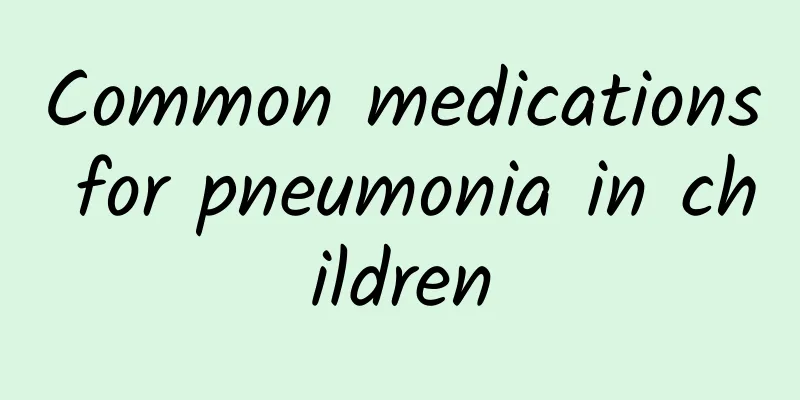Why do newborns have jaundice after birth?

|
Neonatal jaundice is a very common disease in newborns. Clinically, 60% of full-term babies will develop jaundice within one week after birth, and 80% of premature babies will develop jaundice within 24 hours after birth. Before birth, the fetus grows in the mother's womb, which is a low-oxygen environment relative to the atmosphere. Like people living in the plateau, there will be an increase in red blood cells to increase the amount of oxygen carried by the blood. After birth, the baby begins to exchange gases with the atmosphere through the lungs. With the increase in oxygen, a large number of red blood cells become redundant, and decay in the body to form bilirubin, a substance that causes jaundice. Therefore, the skin turns yellow. Distinguishing between pediatric jaundice and neonatal jaundice 1. Neonatal physiological jaundice: Newborns begin to develop jaundice 2-3 days after birth, which is most obvious after 4-5 days, and disappears naturally in 7-14 days. The general condition is good and there are no adverse reactions. It is called "physiological jaundice". Because premature babies have more immature liver function, jaundice will appear later, probably on the 3rd or 4th day, and it will last longer. Jaundice in premature babies can last for 14 days or longer. 2. Neonatal breast milk jaundice: Jaundice starts 4-7 days after birth and lasts for about 2 months, mainly with elevated unconjugated bilirubin and no clinical symptoms. 3. Neonatal pathological jaundice: Jaundice appears early, and jaundice occurs within 24 hours after birth. Jaundice lasts for a long time, and jaundice continues or even deepens 2-3 weeks after birth, or deepens after relief. The degree of jaundice is severe, golden yellow or jaundice spreads throughout the body, and there is also obvious jaundice in the palms and soles of the feet, or serum bilirubin is greater than 12-15 mg/L. Accompanied by anemia or lighter stool color. There are abnormal body temperature, poor appetite, vomiting and other manifestations. Guanguan reminds: If the baby has general physiological jaundice, mothers don’t have to worry, jaundice can easily fade, but if it is pathological jaundice, mothers should take the baby to the hospital for treatment as soon as possible, and don’t delay the baby’s treatment time! Pediatric jaundice Newborn jaundice normal value The normal value of jaundice for full-term babies is different from that for premature babies. Usually, the normal value of jaundice in full-term newborns is 12.9 mg/100 ml, that is, the bilirubin level in 100 ml of blood is less than 12.9 mg. The normal value of jaundice in premature babies is 15 mg/100 ml of blood, that is, the bilirubin level in 100 ml of blood is less than 15 mg. When the baby's jaundice value exceeds 12.9 mg/dl or the neonatal jaundice index rises too fast (rising more than 5 mh/dl per day), or the jaundice lasts longer than the time it takes for full-term babies to disappear within 14 days and premature babies to disappear within 4 weeks, or the jaundice reappears. It means that the newborn jaundice is unhealthy and may suffer from pathological jaundice. Can we tell whether the baby has jaundice in children? The level of jaundice in the blood cannot be judged by the degree of yellowness of the skin observed with the naked eye, because there are differences in skin color and under different light. Whether the jaundice level of a newborn is normal must be determined by a professionally trained pediatrician who takes into account many factors. Ordinary parents should accept the doctor's advice and not make their own judgments. There are differences among people of different races and skin colors. The proportion of newborns with jaundice in my country is about 50% in full-term infants and about 80% in premature infants. The jaundice level that can be observed with the naked eye is about 5-8 micrograms/dL. When it is lower than this value, parents cannot observe it with the naked eye. Therefore, the jaundice value of the newborn must be obtained by measuring bilirubin. |
<<: How long does it take for neonatal jaundice to subside?
>>: Obstructive jaundice is not harmful
Recommend
What are the symptoms of Hirschsprung's disease?
Hirschsprung's disease is a congenital intest...
Is it necessary to use blue light for newborns with high jaundice?
Newborns with high jaundice do not necessarily ne...
What causes diarrhea in children?
Diarrhea in children is a common gastrointestinal...
Children are susceptible to hand, foot and mouth disease. Parents need to protect their children in these ways.
In spring, various infectious diseases are prone ...
Are childhood seizures life-threatening?
Convulsions in children can be life-threatening, ...
Sequence of subcutaneous fat loss in malnourished children
Malnutrition can lead to many diseases. Whether i...
What are the steps for patent ductus arteriosus surgery?
What are the surgical procedures for patent ductu...
Two ways to provide good care for children. What are the causes of pathological jaundice?
Neonatal jaundice refers to a disease characteriz...
Why does diarrhea in children cause persistent and chronic diarrhea?
The causes are more complicated, such as general ...
"June 1st" pays attention to children's hernia
Childhood hernia is one of the most common congen...
Are there any symptoms of patent ductus arteriosus in newborns?
Patent ductus arteriosus (PDA) is a congenital he...
Treatment of patent ductus arteriosus
What are the treatments for patent ductus arterio...
What medicine should children take for respiratory tract infection and cough
When children have respiratory infections or infe...
A brief description of nursing records for Kawasaki disease
Many parents are not particularly familiar with K...
What causes coughing and vomiting in children? How to treat coughing and vomiting in children?
There are many reasons why children cough and vom...









